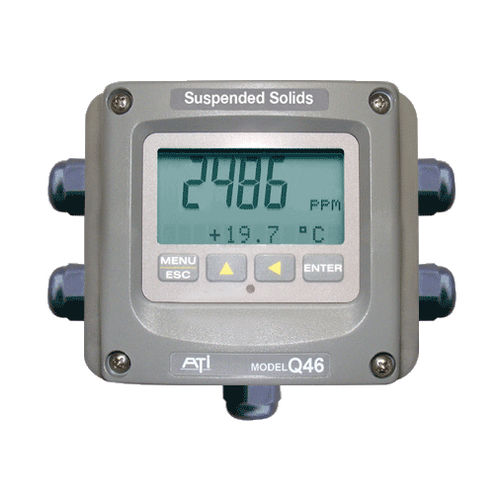Monitoring suspended solids in wastewater and industrial process water can be useful for either process control or for alarming of unusual conditions. In biological treatment systems, monitoring suspended solids in the aeration tank can assist operators in maintaining optimum MLSS (Mixed Liquor Suspended Solids) concentration. In industrial clarifier's, suspended solids water quality monitoring can warn of upset conditions that might result in the discharge of solids that exceed plant permits.
ATI’s Model Q46/88 Suspended Solids Monitor provides real time monitoring of suspended solids in a variety of water and wastewater applications. A submersible sensor immersed in process tanks or effluent channel senses particulates in the water using an optical backscatter technique that allows measurement over a wide range. Results are displayed on the Q46 electronic unit mounted near the sensor with a variety of outputs provided as standard.
SENSOR OPERATION
Suspended solids sensors are optical devices operating in the infrared region. Unlike turbidity sensors that use 90 degree scatter to optimize sensitivity, suspended solids sensors use “backscatter” to allow solids measurements at much higher levels. Operation with infrared light ensures very long sensor life and minimizes the effects of changing sample color.

